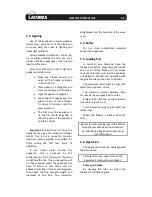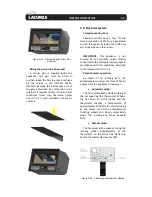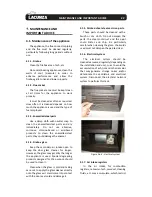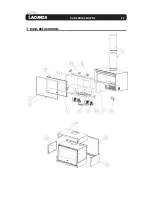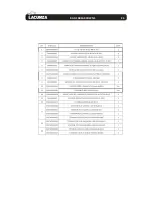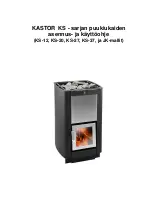
INSTRUCTIONS FOR THE INSTALLER
14
2.
2.4.
Chimney flue
The chimney flue must comply with
present standards on the installation of
chimneys.
In rooms equipped with Controlled
Mechanical Ventilation, the ventilation
outlet must never be connected to the
flue.
The appliance must always have its own
chimney flue, never sharing a chimney flue
with another appliance.
2.4.1.
Type of flue
The flue must be made of special
material designed to resist the products of
combustion (e.g. stainless steel, enamelled
steel, etc.).
Central-heating appliances (with back
boiler) require a double-sleeve flue,
insulated throughout the installation, even
inside the building. This prevents the gases
from cooling down too much and,
consequently, prevents downdraughts,
condensation and low top surface and
oven temperatures on kitchen stoves.
If the chimney is constructed, then it is
necessary to pipe and insulate it to ensure
correct updraught.
The diameter of the pipe must be the
same as the diameter of the flue socket on
the appliance over its entire length in order
to ensure correct operation.
The flue must prevent the entry of
rainwater.
The flue must be clean and airtight over
its entire length.
The flue must be at least 6m tall and the
chimney cap must not hinder the free
release of gases.
If the flue tends to suffer from
downdraught, then it is necessary to fit an
effective anti-downdraught cowl, a static
cowl or a smoke extraction fan, or reshape
the chimney.
Never make 90º bends due to the great
loss of draught they cause, and reduce 45º
bends down to an absolute minimum. Each
45º bend is equivalent to a 0.5m reduction
in flue length. Horizontal flue sections
should not be installed because they cut
updraught a great deal.
If the flue draws at more than 20 Pa on
12Pa appliances, then an effective damper
must be fitted on the flueway. This damper
must be visible and accessible.
The chimney flue must not rest on the
appliance.
Bear in mind that high temperatures
may be reached in the flue, meaning that it
is essential that insulation be enhanced in
sections in which combustible material is
present (wooden beams, furniture, etc.). It
may even be necessary to protect non-
combustible material in order to prevent
breakage, deformation, etc., as a result of
overheating if the material is not designed
to withstand high temperatures.
It must be possible to clean the entire
flue, no sections being left inaccessible for
cleaning purposes.
2.4.2.
Chimney crown
The upper end of the chimney must
clear the roof, the roof ridge or any
obstacle located on the roof by at least 1m.
Summary of Contents for Titanium Plus
Page 1: ...Titanium Plus Instruction Book...
Page 26: ...BASIC BREAKDOWNS 25 6 BASIC BREAKDOWNS...
Page 27: ...BASIC BREAKDOWNS 26 6...
Page 28: ...BASIC BREAKDOWNS 27 6...
Page 29: ...DECLARATION OF PERFORMANCE 28 7 DECLARATION OF PERFORMANCE...
Page 30: ...DECLARATION OF PERFORMANCE 29 7...
Page 31: ...CE MARK 30 8 CE MARK...



















